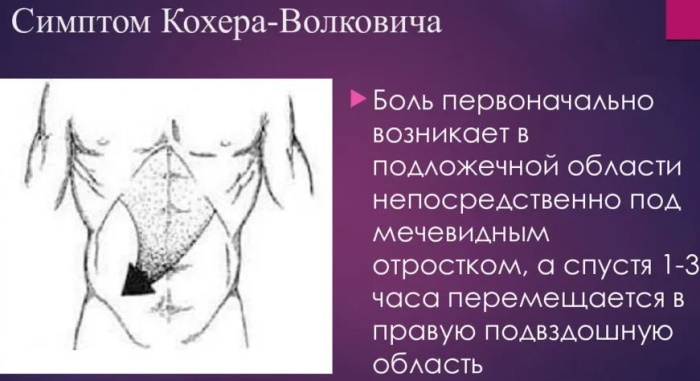Primary purulent inflammation begins because ingestion of pyogenic microorganisms, their center may be located in the muscles, bones, subcutaneous tissue, internal organs and cavities. Of primary focus with the blood and lymph pyogenic agents can be relocated in the brain tissue, where a secondary purulent process.
An important place in the treatment of brain abscess takes its timely diagnosis, which involves determining the type of disease. In neurology used extensive classification of the disease. Depending on where accumulation of pus in the brain secrete an abscess of the cerebellum, temporal area, frontal area, occipital lobe and the parietal lobe. Depending on purulent accumulations relative to brain membranes isolated abscess such species as intracerebral, subdural, epidural and periventricular.

Causes of
The main causes of brain abscesses are various traumas or inflammatory processes. It should be noted that the brain and its membranes are very sensitive to various types of pyogenic infection. When brain abscess infectious agents are preferably streptococci, staphylococci, pneumococci, meningococci or mixed infection.
One of the most frequent causes of brain abscesses are a variety of damage, especially bullet ( "posttraumatic abscesses"). In wounds brain abscesses often located next to the wound channel, at least - in itself, and even less - away from the channel. Post-traumatic brain abscesses may be early or acute and late, or chronic. The early brain abscesses are those that evolve to healing the wounds of the skull, t. E. usually within 1-3 months after the former injury. By late brain abscesses are abscesses arising after complete or nearly complete wound healing of the skull, t. E. usually after 3-4 months or more after the injury. In some cases, later abscesses occur even many years after the former injury ( "dormant infection"). For later brain abscesses are characterized by well-defined connective capsule, a few millimeters thick.
Another cause of brain abscesses (especially frequent in peacetime) are inflammation in the middle ear in the form of acute and especially chronic suppurative otitis (Otogenic abscesses) in the nasal cavity and paranasal cavities, for example in the frontal sinuses (rhinogenous abscesses) in the skull bone (osteomyelitis) and purulent processes in other parts of the body such as lung abscess or gangrene (metastatic abscess) and certain infectious diseases (sepsis, typhoid and typhus fevers, flu). It should be noted that Otogenic brain abscesses often localized in his temporal lobe, rhinogenous - in the frontal lobe, etc...
Klassfikatsiya
At the place of accumulation of pus relatively meninges abscess is:
- intracerebral (pus is localized in the matter of the brain).
- subdural (pus hearth located below a solid brain sheath).
- epidural (pus localized on the solid brain sheath).
- perventrikulyarny abscess.
At the place of localization of abscess lesions in the brain are distinguished:
- abscess of the temporal region of the brain.
- abscess of the frontal region of the brain.
- cerebellar abscess.
- abscess of the occipital lobe of the brain.
- abscess of the parietal lobe of the brain.
According to the development of purulent inflammation in the brain abscesses are four stages:
- Initial stage.
- Latent stage.
- Explicit stage.
- End-stage.
In 20% of brain abscesses source and cause of bacteremia brain tissue fails to detect.
Pathogenesis and Etiology
Formed brain abscess in four stages:
| The first stage lasts from 1 day to 3 days. | It is going development of encephalitis (inflammation of the brain tissue limited). At this stage, to cope with the inflammation is quite real. It can be resolved through both antibacterial therapy and spontaneous. |
| The second stage lasts from 4 to 9 days. | In the center is the abscess with pus cavity which increases if properly treated or abscess in the body defense mechanisms insufficient. |
| The third phase lasts 10 to 13 days. | These days, around the hearth with pus to form a protective capsule, which consists of connective tissue. This capsule does not propagate purulent process. |
| The fourth stage - 3 weeks. | By this time, the capsule finally compacted and around the area formed gliosis. Further situation depends on the reactivity of the organism flora of virulence and efficacy of treatment. At this stage it is possible to reverse the development of inflammation, but often it only increases and new foci of inflammation around the protective capsule. |
VozbuditelyamiGematogenny brain abscess are most often streptococci, sometimes with the addition of bakteriotidov (Bacteroides spp.).

symptoms
brain abscess manifested obscheinfektsionnymi, cerebral and local (focal) symptoms. Recent characterize localized abscess.
- Obscheinfektsionnye symptoms: fever (sometimes intermittent), fever, leukocytosis, blood, increased erythrocyte sedimentation rate, signs of chronic infection (paleness, weakness, weight loss).
- Cerebral symptoms appear due to an increase in intracranial pressure due to abscess. The most constant symptom - headaches, often with vomiting. In the fundus stagnant disks or optic neuritis. periodically determined bradycardia to 40-50 beats per minute, and mental disorders. Noteworthy lethargy and apathy of the patient, the slowness of his thinking. Gradually developing stupor, drowsiness; in severe cases, untreated - coma. As a consequence of intracranial hypertension general epileptic seizures may occur.
- Focal symptoms depend on the localization of abscess in the frontal, temporal lobes, the cerebellum. Abscesses located deep in the hemispheres is propulsion zone may occur without symptoms conductor. Otogenic abscesses sometimes not formed on the side of otitis media, and on the other, giving the corresponding clinic. Along with focal may experience symptoms associated with edema and compression and dislocation of brain tissue. At the nearness of the abscess to shells and meningeal symptoms are found in the cerebellar abscess.
The CSF pleocytosis detected (25-300 cells), consisting of lymphocytes and polynuclears, increasing levels of protein (0,75-3 g / l) and increased pressure. Often, however, the normal cerebrospinal fluid.
Diagnostics
Because the symptoms that characterize the brain abscess, do not have a certain specificity and similar to those with other brain lesions, important differential diagnosis of brain abscess brain. Usually it consists in carrying out imaging with contrast - MRI or CT.
- In the early stages is optimal MRI, because CT can not "notice" tissue inflammation. At the stage of encapsulation CT becomes informative. As a rule, peripherals focus on the image takes the round shape, as the contrast agent accumulates along the contour of the capsule. In the early stages on the MRI image is estimated intensity encephalitic focus signal.
- In complicated cases are shown puncture abscess (stereotactic biopsy) in order to identify the pathogen. This is necessary not only to confirm the diagnosis, but also to carry out sowing the determination of pathogens and their drug sensitivity. With this means there is a "sighting" medication.
Fence cerebrospinal fluid, as a rule, is not revealing. Furthermore, when lumbar puncture, in severe cases the disease may sharp deterioration condition of the patient to the risk of death.

How is the treatment?
Upon detection of a brain abscess treatment should begin as soon as possible. Ideally, it should occur in the first pathogenetic step. When brain abscess complex therapy that involves the use of the following areas:
- antibiotic therapy;
- anti-inflammatory;
- restorative;
- antipyretic;
- dezintokskatsionnaya (but one should be careful to not develop cerebral edema);
- correction of disturbed vital functions (heart activity, breathing function, etc.);
- treatment of the primary focus, etc.
Also remains unshakable principle of purulent surgery "Where pus - there and cut". This means that after some stabilization general condition of the patient, it is advisable to carry out opening and purulent drainage chamber. Irrigation can be carried out purulent cavity sterile antibiotic solution, which has a local action.
Prolonged therapy. At the initial stage it is carried out in an intensive care unit, and then the patient is transferred to the neurological department. After discharge from the hospital begins a long period of rehabilitation.
Features of operation
surgical method is used more often. In this case, a drainage ottochnoe, wherein the set in the abscess catheter is then introduced antibiotics. In severe cases, disposing the second catheter - infused therethrough, the cavity was washed with sodium chloride solution. When multiple abscesses drained hearth. Only it is important to be extremely careful, or pus may break while the patient is unlikely to save.
So, the sooner the pathogen is detected, the more favorable the prognosis. The outcome of the disease depends on the effectiveness of therapy. illness often leads to death, disability, epileptic syndrome. For prophylactic methods include treatment of purulent processes, high-quality treatment of wounds, the treatment to traumatologist in case of injury. It is important to understand that the brain abscess - one of the most dangerous types of the disease.
The prognosis of brain abscess
Outcome depends on whether the doctor was able to identify the causative agent of an abscess of the crop. It makes it extremely important, because then it will be possible to determine the sensitivity of bacteria to antibiotics and to select the most suitable scheme of therapy. The prognosis for the patient's health in brain abscess is also dependent on the number of clusters of purulent, the patient's condition, properly chosen tactics of treatment.
The risk of various complications of a brain abscess is very high. Specifically, about 10% of all cases are fatal, and 50% - disability. In addition, the majority of patients after treatment may appear epileptic syndrome - a condition which is characterized by the occurrence of epileptic seizures. Poorer prognosis doctors give patients who subdural empyema was found. In this case, the patient is no clear boundary purulent focus due to the high activity of pathogen resistance or insufficient it organism. Lethal cases when subdural empyema reach 50%.
The most dangerous form of brain abscess is considered a fungal empyema, which is accompanied by immunodeficiency. Such disease practically not treated, and the number of fatalities when it is about 95%. In turn, epidural empyema have a more favorable prognosis and almost never accompanied by complications.

prevention
Prevention in this case would be an appropriate and high-grade treatment of primary purulent processes affecting the upper respiratory organs, pneumonia, any foci of infection in the body.
After receiving head injuries required a full treatment of wounds that can largely reduce the risk of abscess. It is also a very important role in the prevention plays a complete and balanced nutrition. It is necessary to eat meat, vegetables and fruits, as well as vitamins A, E, C, V.
Total
brain abscess - a serious pathology that occurs on the background of existing diseases in the body. In order to timely detect the disease and start treatment immediately, you need to know first clinical symptoms and be able to use additional methods of research.
Early and adequate therapy can reduce the risk of developing life-threatening complications and make the negative consequences for the organism minimal.



